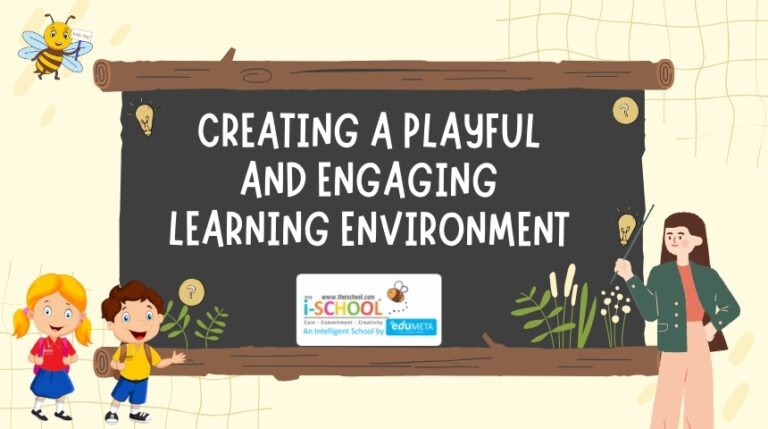In today's visually-driven world, the right images can transform educational materials from mundane to captivating. That’s where Imago Images comes into play. Specializing in high-quality stock images, Imago offers a plethora of visuals tailored for educators. Whether you’re crafting lesson plans, presentations, or interactive content, leveraging Imago's extensive library can help bring your ideas to life. Let’s dive into how these images are reshaping education!
Benefits of Using Imago Images for Learning Materials

Integrating Imago Images into your learning materials offers numerous advantages that enhance both teaching and learning experiences. Here are some key benefits:
- Visual Engagement: Images grab attention instantly. When students see relevant visuals, they are more likely to engage with the content, leading to better retention of information.
- Improved Understanding: Complex concepts can be simplified through visuals. For instance, using an illustration of the water cycle can make it easier for students to grasp the process compared to text alone.
- Diverse Learning Styles: Every student learns differently. Some are visual learners who benefit from images more than text. Imago Images caters to these diverse needs, making education more inclusive.
- Enhanced Creativity: High-quality images can spark creativity in students. When tasked with projects, visuals can inspire unique approaches and ideas, pushing students to think outside the box.
- Professional Appeal: High-quality images lend professionalism to your materials. Whether it’s for a classroom presentation or an educational blog, polished visuals create a more credible and appealing product.
Furthermore, using Imago Images can help in:
- Creating Interactive Content: Imagine incorporating images into quizzes and games. Visuals can make learning feel like an adventure.
- Facilitating Discussions: Images can serve as effective prompts for classroom discussions. A thought-provoking photo can elicit opinions and stimulate critical thinking.
- Supporting Language Learners: For students learning a new language, images can bridge the gap, providing context and aiding comprehension of new vocabulary.
In summary, Imago Images is not just about aesthetics; it’s about enhancing the educational experience as a whole. By utilizing these images, you’re not only making materials more engaging but also catering to various learning styles and needs, ultimately fostering a richer learning environment. So, why not explore Imago Images for your next educational project and see the difference for yourself?
Also Read This: Freelancers’ Top Choice for Hassle-Free Projects – Imago Images
3. How to Integrate Imago Images into Educational Content
Integrating Imago Images into your educational content can significantly enhance the learning experience. Here’s a step-by-step guide to make it seamless and effective:
- Know Your Audience: Before you dive into selecting images, understand who your learners are. Are they primary school students, college attendees, or adult learners? Tailor your image choice to their interests and comprehension levels.
- Select Relevant Images: Choose images that are not just visually appealing but also relevant to the topic at hand. For instance, if you’re teaching about ecosystems, images of various habitats or species can bring the subject to life.
- Contextualize the Images: Don’t just drop an image in; provide context! Accompanying text that explains the significance of the image helps learners connect the visual with the concept. For instance, when using an image of a polar bear, discussing its habitat and conservation status can deepen understanding.
- Encourage Interaction: Use Imago images as a starting point for discussions or activities. Ask students to describe what they see or how it relates to what they’ve learned. This interaction fosters engagement and retention.
- Utilize Multimedia: Combine images with videos, audio clips, or interactive elements. For example, create a slideshow where each image is paired with a short video clip that provides additional context.
- Feedback and Assessment: Use images in assessments! For example, you could provide an image and ask students to write a short paragraph about it, or even create multiple-choice questions based on what they see.
By thoughtfully integrating Imago Images into your materials, you create a rich, engaging environment that appeals to various learning styles and keeps students invested in their education.
Also Read This: Why News Agencies Consistently Trust Imago Images for Accurate and Reliable Visuals
4. Examples of Effective Learning Materials Using Imago Images
Let’s look at some powerful examples of educational materials that effectively utilize Imago Images:
| Material Type | Description | Imago Image Example |
|---|---|---|
| Interactive E-Book | An e-book on marine biology that features vibrant images of ocean life. Each chapter begins with an engaging image that sets the theme. | Images of coral reefs and various marine species. |
| Infographics | Infographics that compare climate change effects across different regions, using Imago images to illustrate statistics visually. | Graphs intertwined with images of affected wildlife. |
| Presentation Slides | Slides for a history lesson that include images of historical events, making the content more relatable and memorable. | Images of key historical figures and their environments. |
| Social Media Campaign | A campaign for environmental awareness that uses striking images to promote discussions on sustainability. | Pictures of deforestation vs. lush forests. |
These examples demonstrate the versatility of Imago Images in various educational materials. By leveraging powerful visuals, educators can create more compelling and engaging content that resonates with students and fosters a love for learning. Whether it’s through interactive platforms or traditional formats, the right images can transform mundane lessons into dynamic experiences!
Also Read This: How Imago Images Enhances E-commerce with High-Quality Product Photos
5. Tips for Selecting the Right Imago Images for Your Audience
When it comes to creating engaging learning materials, the selection of images is just as crucial as the content itself. Using Imago images can significantly elevate your educational resources, but how do you choose the right ones for your audience? Here are some practical tips:
- Understand Your Audience: Before diving into the image library, take a moment to consider who your learners are. Are they young children, high school students, or adults? For instance, if you’re designing materials for elementary school kids, vibrant and playful images will resonate better than abstract concepts.
- Relevance is Key: Ensure that the images you select align with the topic at hand. For example, if you're teaching about ecosystems, pictures of various habitats or species can make the content more relatable and easier to understand.
- Quality Over Quantity: It might be tempting to fill your materials with numerous images, but a few high-quality, impactful visuals can be far more effective. Look for images that evoke emotion or provoke thought, rather than simply filling space.
- Diversity Matters: Incorporating diverse images can help all students see themselves in the material. This might include a variety of cultures, backgrounds, and perspectives. For example, when discussing global health topics, include images that represent different regions and their unique challenges and solutions.
- Use Images to Enhance, Not Distract: Images should complement your text, not overpower it. Opt for images that add meaning and context rather than those that are merely decorative. For instance, an infographic summarizing key points can be more helpful than a generic stock photo.
By carefully considering these factors when selecting Imago images, you can create materials that not only engage your audience but also enhance their learning experience. Remember, the right visuals can bridge gaps in understanding and make complex ideas more accessible.
6. Conclusion: Enhancing Education with Visual Content
In the ever-evolving landscape of education, the power of visual content cannot be overstated. Using Imago images in your learning materials is more than just an aesthetic choice; it’s a strategic move that can boost comprehension and retention among learners. Here’s why visual content is a game-changer:
- Improved Engagement: Visuals capture attention. Students are more likely to engage with materials that include relevant and striking images. For instance, a stunning photograph of a historical event can spark curiosity and motivate learners to explore further.
- Enhanced Memory Retention: Studies show that people remember information better when it’s paired with images. So, when you include visuals alongside your text, you’re effectively reinforcing the learning material. Think of a complex scientific diagram; it helps students visualize concepts they might struggle to grasp through words alone.
- Encouragement of Critical Thinking: Images can provoke questions and discussions. When students analyze a photo or infographic, they practice critical thinking skills as they interpret its meaning and context. For example, discussing a political cartoon can lead to deeper conversations about current events and societal issues.
- Accessibility for Diverse Learning Styles: Not all learners absorb information the same way. Visual learners, in particular, benefit significantly from the inclusion of images. By catering to different learning styles, you create a more inclusive educational environment.
In summary, leveraging Imago images in your educational materials not only enriches the content but also transforms the learning experience. As you create your next set of resources, keep these points in mind and watch your audience engage with the material like never before. Education is not just about information—it's about connection, and visuals are a powerful tool in making that connection happen.
 admin
admin








